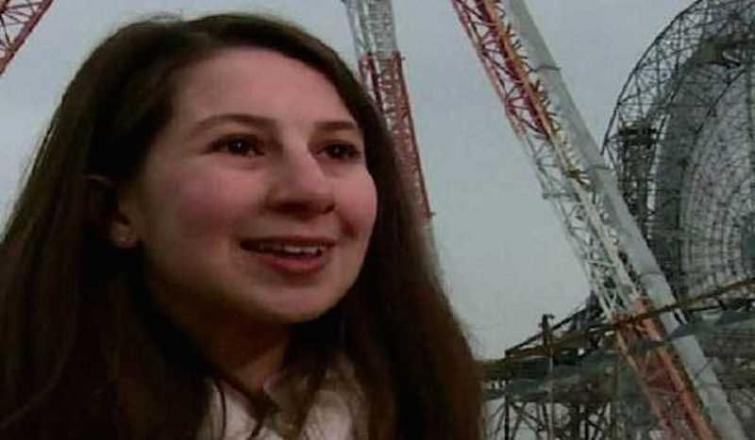
London, Apr 11 (UNI): A 29-year-old computer scientist has earned plaudits worldwide for helping develop the algorithm that created the first-ever image of a black hole.
Katie Bouman led development of a computer programme that made the breakthrough image possible, said a BBC News report.
The remarkable photo, showing a halo of dust and gas 500 million trillion km from Earth, was released on Wednesday.
For Dr Bouman, its creation was the realisation of an endeavour previously thought impossible.
Excitedly bracing herself for the groundbreaking moment, Dr Bouman was pictured loading the image on her laptop.
"Watching in disbelief as the first image I ever made of a black hole was in the process of being reconstructed," she wrote in the caption to the Facebook post.
She started making the algorithm three years ago while she was a graduate student at the Massachusetts Institute of Technology (MIT).
There, she led the project, assisted by a team from MIT's Computer Science and Artificial Intelligence Laboratory, the Harvard-Smithsonian Center for Astrophysics and the MIT Haystack Observatory.
The black hole image, captured by the Event Horizon Telescope (EHT) - a network of eight linked telescopes - was rendered by Dr Bouman's algorithm.
In the hours after the photo's momentous release, Dr Bouman became an international sensation, with her name trending on Twitter.
In a tweet, New York Democratic Rep Alexandria Ocasio-Cortez wrote that Ms Bouman should take her "rightful seat in history".
"Congratulations and thank you for your enormous contribution to the advancements of science and mankind," she tweeted. "Here's to #WomenInSTEM!," which stands for science, technology, engineering and mathematics.
Dr Bouman was also hailed by MIT and the Smithsonian on social media.
"3 years ago MIT grad student Katie Bouman led the creation of a new algorithm to produce the first-ever image of a black hole," MIT's Computer Science & Artificial Intelligence Lab wrote. "Today, that image was released."
But Dr Bouman, now an assistant professor of computing and mathematical sciences at the California Institute of Technology, insisted the team that helped her deserves equal credit.
The effort to capture the image, using telescopes in locations ranging from Antarctica to Chile, involved a team of more than 200 scientists.
"No one of us could've done it alone," she told CNN. "It came together because of lots of different people from many different backgrounds."
Image credit: UNI
Support Our Journalism
We cannot do without you.. your contribution supports unbiased journalism
IBNS is not driven by any ism- not wokeism, not racism, not skewed secularism, not hyper right-wing or left liberal ideals, nor by any hardline religious beliefs or hyper nationalism. We want to serve you good old objective news, as they are. We do not judge or preach. We let people decide for themselves. We only try to present factual and well-sourced news.







